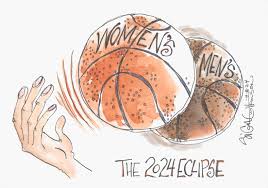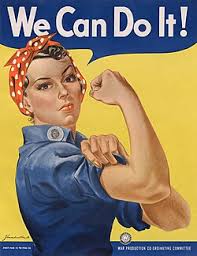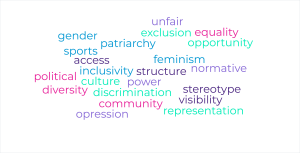1
In responding to the prompts, I aimed to show an informed grasp of the relationship between gender, feminist theory, and sport, as expressed in the bulk of the articles and writers’ work. I wanted to underline the structural impediments that women encounter in athletics, as well as the importance of feminist philosophy in overcoming these disparities. In addition, I attempted to integrate theory with personal introspection, conveying why these concerns are so important. Overall, I’m pleased with my replies, especially the integration of crucial concepts and instances. However, I believe there is always space to improve my communication and go further into certain topics such as intersectionality.Section One: The Fundamentals
A) What do we know about sport? What are common assumptions we make about sport and society?
| Multiplayer sports often serve as a powerful example of teamwork and unity, showcasing the importance of strategy, communication, and coordination within a team. Players must work together to outmaneuver their opponents and achieve a shared objective, fostering a sense of camaraderie and mutual reliance. This environment can encourage teammates to put aside personal differences and focus on collective success, building trust and strengthening bonds.
However, while multiplayer sports excel at bringing people together in pursuit of a common goal, they do not fully address the complexities of human emotions and interpersonal dynamics. When individuals spend a significant amount of time in close proximity, conflicts and misunderstandings are almost inevitable. Personal issues, unspoken grievances, or clashing perspectives can create tension, which, if left unresolved, may fester and grow over time. In some cases, this can lead to a toxic atmosphere where resentment and negativity overshadow the spirit of teamwork. Instead of uniting the group, unresolved conflicts can fracture the team, eroding morale and hindering overall performance. This highlights the need for effective conflict resolution, open communication, and emotional intelligence within team settings to ensure that challenges are addressed proactively and unity is maintained. |
Exercise 3: Notebook prompt
What are some other metanarratives about sport that you are familiar with? Find an image or video clip or draw something yourself that captures this idea…
So what? Why does any of this matter? Does it matter? As something we grow up with – live with – play through – we don’t often interrogate the meanings of sport, and perhaps we don’t want to.
But being aware of these assumptions and metanarratives is especially important, I would argue, because of the centrality of sport to our everyday lives, the role that sport plays in shaping our childhood and worldviews and….. [finish that thought]
| But being aware of these assumptions and Narratives are especially important, I would argue, because of the centrality of sport to our everyday lives, the role that sport plays in shaping our childhood and worldviews and societal values. Sport frequently acts as an instrument of society, representing and supporting beliefs about competitiveness, achievement, identity, and community. It has the potential to inspire resilience, create belonging, and celebrate diversity, but it may additionally promote exclusion, injustice, and damaging stereotypes if not analyzed properly.
Narratives about sports frequently concentrate around principles such as a system of merit in which success is viewed solely as the result of hard work and skill; national pride, in which sport is used to demonstrate a country’s strength and identity; and commercialism, in which the emphasis switches from play and association to profit and branding. These accounts influence not just how we see sports, but also how we engage with larger society systems like education, work, and culture. Sport matters so much more as a essential part of society because is more than simply a game it is a cultural phenomena that shapes how we see justice, community, and identity. By questioning the preconceptions and metanarratives that envelop sport, we can challenge injustices, promote diversity, and make sure the values it fosters are consistent with the sort of world we aim to create.
|
B) What is social justice?
Exercise 4: Padlet Prompt
Think back to the last section and try to look at some of the ideas we discussed differently. How might sport and social justice actually co-exist?
Record any images, video clips, or gifs you added to the padlet and identify a point of intersection between sport and social justice (can be an issue or a barrier or a debate or something you would like to explore in more depth in this course) . Screenshot or paste in your response below.
|
Sport and social justice intersect daily as sports reflect broader cultural and societal dynamics, offering opportunities to challenge inequities and promote inclusion. Social justice, defined as the creation and maintenance of fair and equitable opportunities, is particularly relevant in the realm of sports. The readings by Harrison, Azzarito, and Hodge (2021), Scraton and Flintoff (2013), and Wetherly, Watson, and Lang (2017) provide essential frameworks for understanding how sports can serve as a platform to advance equity, dismantle oppressive systems, and foster inclusive environments. Access to sports and opportunities to participate often mirror systemic barriers that hinder equitable involvement. Growing up, my parents, like many immigrant families, relied on community support or assistance from organizations to enroll their children in sports, camps, and extracurricular activities. It was disheartening to see classmates who had the financial resources to participate in costly sports such as ice hockey, tennis, or equestrian activities, while others were left out due to financial constraints. These sports are inherently expensive, requiring substantial investments in travel, coaching, and equipment. This creates a scenario where talent and skill alone are insufficient for advancement, without financial resources to join teams or clubs, individuals from lower-income backgrounds miss out on opportunities to develop their abilities and thrive in competitive sports. Gender disparities in sports also reflect systemic barriers. Growing up, there were few opportunities for girls to join all-male teams, and women’s teams often lacked the funding, resources, and seriousness afforded to men’s teams. For example, while women’s teams were equally expensive to join, they were not treated with the same level of respect or support, perpetuating inequities. These barriers highlight why sports are an ideal platform for addressing inequalities, promoting inclusivity, and fostering equity for marginalized communities. To achieve this, it is vital to address systemic barriers, ensure equitable representation, and provide access to opportunities for all individuals, regardless of gender, socioeconomic status, or race. This includes promoting affordable or free sports programs that guarantee equal access to facilities, equipment, and training. Moreover, sports can amplify the voices of marginalized groups and create pathways for inclusion at all levels, from local teams to professional leagues. Representation matters not just on the field but also behind the scenes in leadership, coaching, and decision-making roles. Promoting gender equity is a critical step toward inclusion, as exemplified by the delayed recognition of women in sports leadership. For instance, Jessica Campbell became the first full-time female coach to work in the NHL only in 2024. Such milestones underscore the need for deliberate efforts to ensure diverse representation in all areas of sports, thereby making the system more equitable and inclusive.
|
C) Social Justice Reading
(note: this activity is optional!)
D) KINESIOLOGY AND SOCIAL JUSTICE
Exercise 5:
Exercise 6:
What are the implications of bodies-at-risk discourse and the refusal to understand the health gap from a social justice perspective, according to the authors of this article?
|
According to Harrison, Azzarito, and Hodge (2021), the “bodies-at-risk” rhetoric reinforces damaging narratives by emphasizing individual responsibility for health while ignoring structural and institutional factors that contribute to health inequalities. This rhetoric frequently pathologizes some bodies, particularly those of disadvantaged groups, by portraying them as intrinsically sick or at risk owing to lifestyle choices, rather than acknowledging the larger social, economic, and political factors that impact health outcomes. The authors claim that this restrictive definition of health ignores socioeconomic determinants of health, such as access to excellent healthcare, education, secure settings, and economic opportunities, which disproportionately affect underprivileged people. Policies and actions that do not evaluate the health gap via a social justice perspective risk perpetuating rather than eliminating injustices. For example, concentrating primarily on individual habits, such as diet or exercise, transfers responsibility to people rather than tackling structural concerns such as food deserts, a lack of recreational places, or discriminatory healthcare procedures. The consequences of this rejection are substantial. It inhibits attempts to create fairness in health outcomes, especially for populations that face systematic oppression. Without a social justice approach, remedies are superficial and fail to address the underlying causes of health inequalities. The authors highlight the importance of a paradigm change in kinesiology and health sciences to prioritize equity-driven frameworks that recognize and fight the systemic hurdles that underprivileged groups experience. This entails reconsidering how health education, research, and practices are geared to promote diversity and justice rather than perpetuate current disparities.
|
Section Two: Sport Feminism
Exercise 7: Notebook Prompt
What is feminism? What does it mean to you? Choose one of the images below and explain how it captures your understanding of feminism (or find one that does speak to you and paste this into your pressbook with an explanation of why it matters to you.
|
Feminism is fundamentally about advocating for gender equality in all aspects of society, politics, economics, and culture. It aims to deconstruct institutional barriers and biases that have historically oppressed women and other gender identities, creating a society in which opportunities, rights, and advantages are not gender-based. To me, feminism is fighting for fairness, inclusion, and respect for all genders, ensuring that no one is constrained by old prejudices or inequities. The photograph, commonly known as “Rosie the Riveter” and with the slogan “We Can Do It!” represents a striking symbol of feminist values. It symbolizes women’s power, aptitude, and resilience, especially during World War II, when women took up traditionally male-dominated roles to help their country. For me, this image represents defying society standards and accepting the concept that women are as talented and worthy in any field they want to pursue. The image of Rosie flexing her muscles challenges traditional ideals of femininity, demonstrating that power and drive are not gender-exclusive characteristics. This is really important to me because feminism is about more than simply empowering women; it is also about building a more equitable society for all. When women are given equal chances and respect, the entire society benefits. The “We Can Do It!” illustration reminds us that the effort for gender equality is still ongoing and that united power and commitment may result in significant progress.
|
Exercise 8: Notes Prompt (optional)
NB: Cornell notes is a great resource that teaches effective notetaking. Unfortunately, our system can’t save notes taken in the H5P app, so this is fully optional.
Exercise 9: Crossword Activity
Exercise 10: Padlet Prompt
|
|

|
The growing interest in women’s sports appears to be more than a temporary trend. Athletes like Angel Reese and Caitlin Clark have not only showcased exceptional talent but have also helped generate broader conversations about the visibility and marketability of women’s sports. Increased media coverage, particularly during major events like the 2023 NCAA Women’s Basketball Tournament, has played a significant role in capturing attention. Social media platforms have further empowered female athletes to connect directly with fans, enhancing their personal brands and expanding their influence beyond their sports. Additionally, commercial success is on the rise, with record-breaking viewership numbers, sponsorships, and merchandise sales for events like the Women’s World Cup. Cultural shifts toward equity and representation have also contributed, aligning societal values with the growing enthusiasm for women’s sports. A recent example of progress is the creation of the Professional Women’s Hockey League (PWHL), which has already sparked notable interest and suggests that the rise in attention is more than just a fleeting trend. For instance, the PWHL game between Montreal and Toronto recently drew a sold-out crowd of 21,105, setting a global record for attendance at a women’s hockey game. This milestone signals meaningful progress for the future of women’s sports and challenges the narrative that women’s sports cannot generate widespread enthusiasm. Growing up, I was frustrated by how women’s sports were often treated as secondary to men’s, despite women often displaying equal, if not greater, skill and talent. While women’s sports have gained traction and become more visible in public media and social spaces, there is still significant progress needed to achieve the proper representation and respect they deserve. Sustaining the current momentum requires continued investment, equitable resource distribution, and consistent visibility for women’s sports. When given the spotlight, audiences have shown they will tune in and engage, proving that the potential for lasting change is real. |




Feedback/Errata